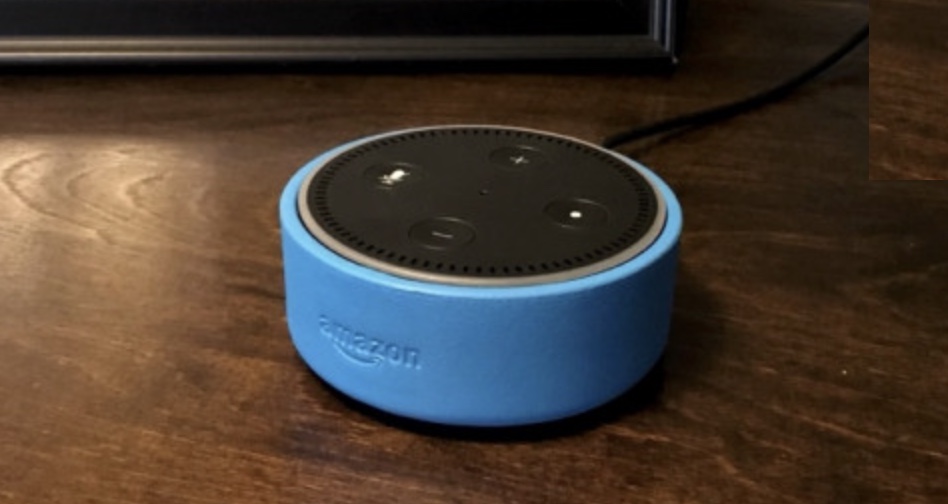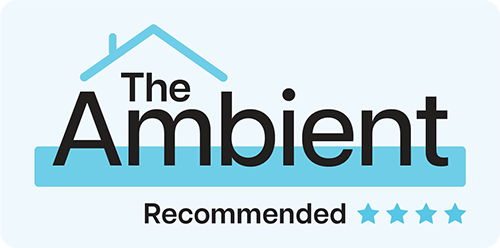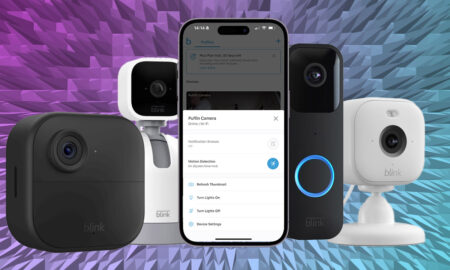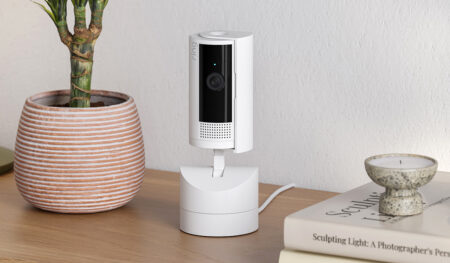The kids are alright with Alexa Freetime
Buy the Echo Dot Kids Edition if it’s your first foray into the Alexa world and you want a speaker for your younger kids to play appropriate music, read books, have some silly fun, and get some help with homework. But buy an Echo or Echo Dot if you’re looking to expand your home’s Alexa capabilities into your children’s rooms (the intercom feature is worth it alone) and make sure to add FreeTime to keep them clear of unsavoury lyrics and prevent them from racking up your Amazon bill.
Pros
- Easy setup
- Robust parental controls
- Kid-friendly design
Cons
- No parental volume controls
- Geared to younger kids; not enough content for older ages
- Tricky to navigate just with voice
You know what Amazon is really good at? Marketing the smart home to normal people. When the Echo quietly debuted in 2015, a lot of techies were smugly predicting another flashy Fire Phone failure. Back then all Alexa could do was play some music and tell a few jokes – turns out that’s what normal people wanted. Then, Amazon began quietly adding some really excellent smart home features. Today, even my 80-year-old neighbour has an Alexa to turn on her smart lights.
Now Amazon is coming for your children. The Echo Dot Kids Edition is the perfect entry point to the online world for children of parents who know nothing about tech and really don’t want to. It’s a locked-down, walled garden that you can control easily through your phone or computer, and if your kid spills his milk on it anytime in the first two years, they’ll send you a new one for free.
Essential reading: The best smart speakers
What more could a parent ask for? (Yes, I know, putting a microphone in your kid’s room has all sorts of privacy issues, but if you’re considering an Echo Dot for your child, you’ve probably already got past that concern.)
On the other hand, if you’re a smart home and/or Alexa enthusiast and already own a Dot or Echo, you can give this device a miss (unless your child is really clumsy). But be sure to wholeheartedly embrace Amazon’s excellent FreeTime. Having lived with the Echo Dot Kids Edition, here’s our verdict.
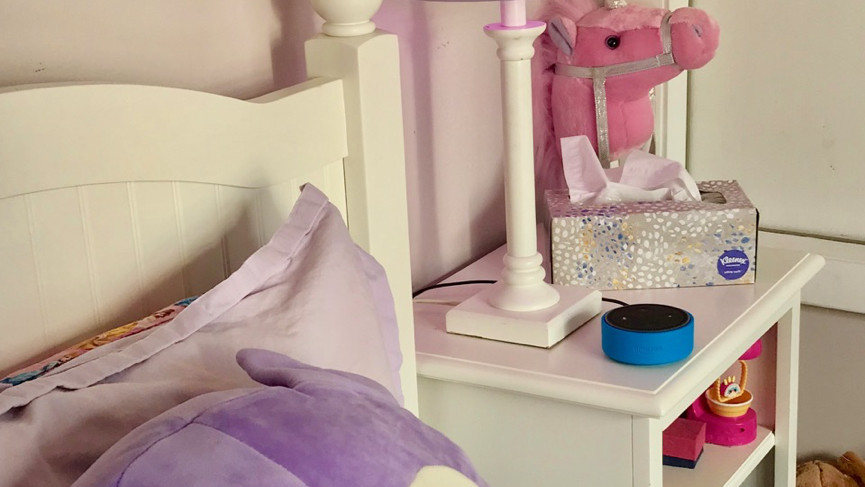
Echo Dot Kids Edition: Design and installation
The Echo Dot Kids Edition looks like and installs in exactly the same way as an Echo Dot – in fact it is one. It’s a second-generation Echo Dot with a colorful rubber sleeve (your choice of red, blue or green). When you consider that this device was announced in April and the third-gen Echo Dot debuted a little over five months later, it’s hard not to see this “model” as simply a way to get rid of an overstock of Dots.
The third-gen Dot sounds decent enough, but as any parent will tell you kids don’t care about sound quality. My eight-year-old was perfectly happy belting her lungs out to Let It Go off an old iPhone 5, so the second-gen Dot is a big upgrade for her.
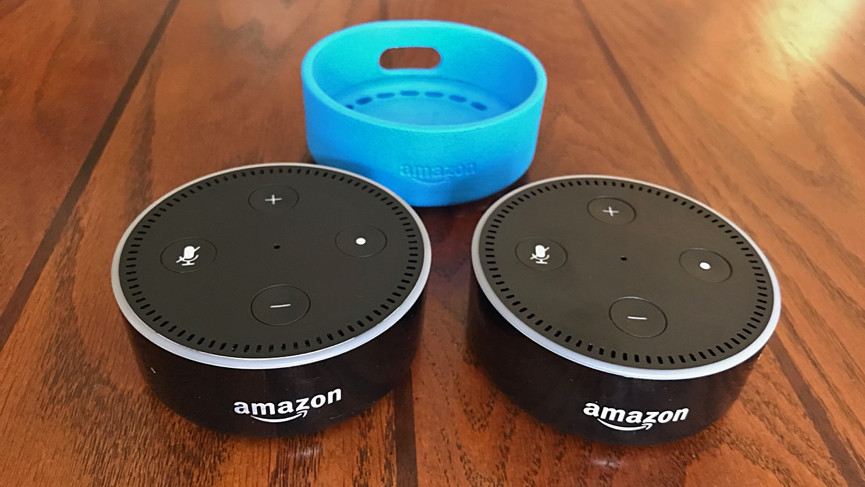
As a parent who bought into the Amazon Fire Tablet Kids edition when it first came out, I can get on board with adding a durable case with a choice of colours, an extended warranty, and free content for a year for a few extra dollars up front. Plus, as someone who has been interrupted six times by children needing tech advice while writing this paragraph, I can tell you parents want simplicity – they don’t want to tinker with their kids’ devices. Parents will pay good money for simplicity, and the Echo Dot Kids Edition is delightfully simple.
To be fair, Amazon isn’t actually adding to the cost here. At $69 it is only $30 more than the second-gen Dot, and for that you get the bump-proof colourful case, a two-year warranty (compared to one-year limited), and a year of FreeTime Unlimited for up to four children (more on that later), which is worth $36 per child if you’re a Prime Member. As ever, Amazon is banking on you keep that subscription going, but whether FreeTime Unlimited is worth it will depend a lot on the age of your child.
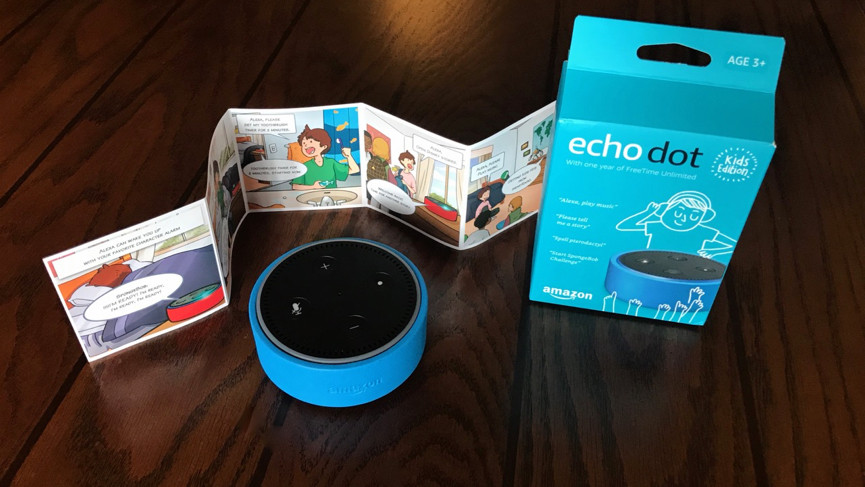
Echo Dot Kids Edition: Setup and features
Once you have the Dot installed, setup is easy. Amazon walks through the process in the smartphone app with colourful slideshows, and a video showing what your child can do with his or her Dot. It also helpfully explains how to set up a child’s profile on your Amazon account (if you already have one set up just select it during setup).
While you go through the routine of adding the Dot to your account you get the option to add FreeTime Unlimited, which is free for up to four children for a year and charged monthly after that ($2.99 per child with Prime). After signing into your Amazon account, you are asked to give Parental Consent, decide if you want to turn on calling, messaging and Drop In capabilities for your child’s device, and if you want to filter explicit music.
All of these settings can be changed at any time from the Parent Dashboard, accessible through the app or website. You can also choose if your child gets access to any smart home devices you have, set daily time limits, and add any skills or Audible books that you have that aren’t part of FreeTime Unlimited.
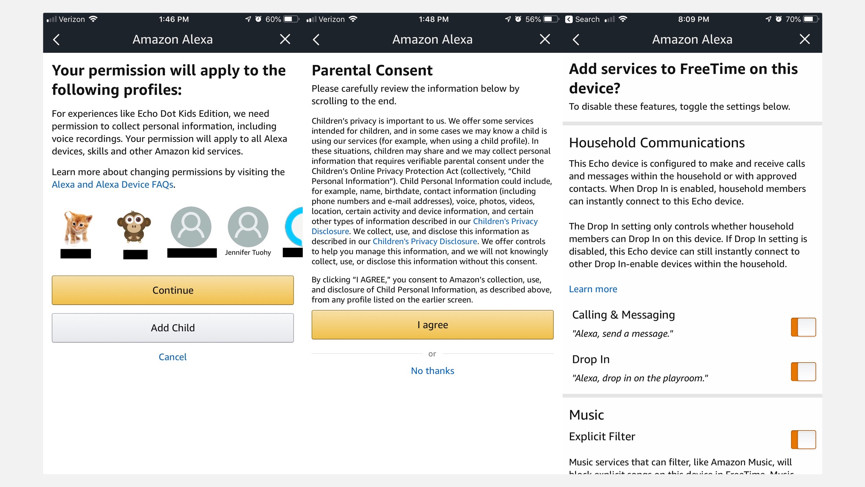
The Amazon Parent Dashboard web interface has even more options for control. Here you can adjust the age filter for content, see a history of all the interactions your child has had – including recordings of requests, calls and skills used – and delete anything at any time.
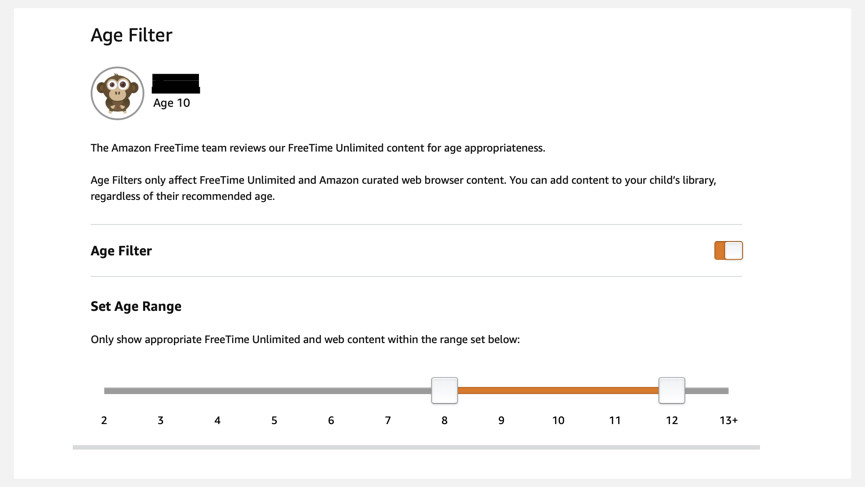
Judging by user forums and reviews there is a lot of confusion around the difference between FreeTime and FreeTime Unlimited, and Amazon does not make the distinction clear.
FreeTime is Amazon’s Parental Control software. It’s completely free and can be enabled on any Amazon device, tablet or speaker in the settings (although it’s not compatible with the Show or Spot). You do not have to have a Kids Dot to use FreeTime. Once you put FreeTime on a regular Dot, Echo or Echo Plus, you can filter explicit songs, set time limits, and so on. It also gives you access to other kid-focused features such as positive reinforcement for using the word “please,” automatically disabled voice-purchasing (so your child can’t order that Xbox One he’s been eyeing), and the ability to add “character alarms,” so they can wake up to Frozen’s Olaf or Cartoon Network’s Ben 10.
FreeTime Unlimited, which comes baked into the Kids Dot but can be added to any Echo at any time, is a premium tier of FreeTime, supplementing the parental controls with an ad-free, “safe place.” For a monthly or annual subscription, you get a decent selection of fun and educational content for your smart speaker and your tablet. This includes ad-free radio stations and music playlists, some Audible books and kid-specific skills.
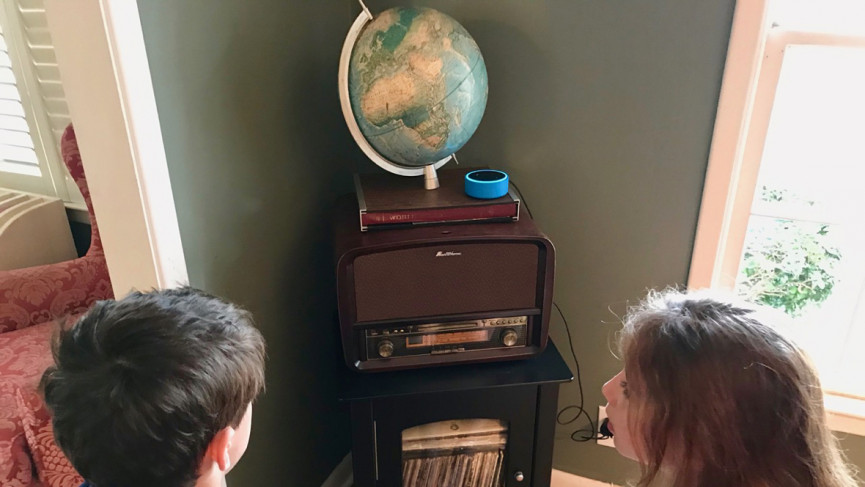
According to Amazon, “All of the content has been hand-selected by the FreeTime Unlimited team, ensuring it is age-appropriate and great for younger ears.” Plus, if your child has a Fire Tablet, iOS, or Android device, you can use your FreeTime Unlimited subscription on those to access “free” books, videos and apps (apps are on the Fire Tablet only).
The big selling point for the Kids Dot is the bundled FreeTime Unlimited. The case and warranty are nice to have, but compared to tablets, which get dropped, crushed and bathed on a regular basis, the chances are the Dot isn’t going anywhere once it’s installed on a shelf in a bedroom or playroom.
If you already have an Echo Dot, just add FreeTime Unlimited and you have a Kids Dot; there is no difference in hardware or software. If you’re just getting into Alexa and want one for your child, opt for the Kids Edition and let Amazon do all the heavy lifting of setting up FreeTime for you. Plus, it’s a less expensive way to get FreeTime Unlimited for the first year.
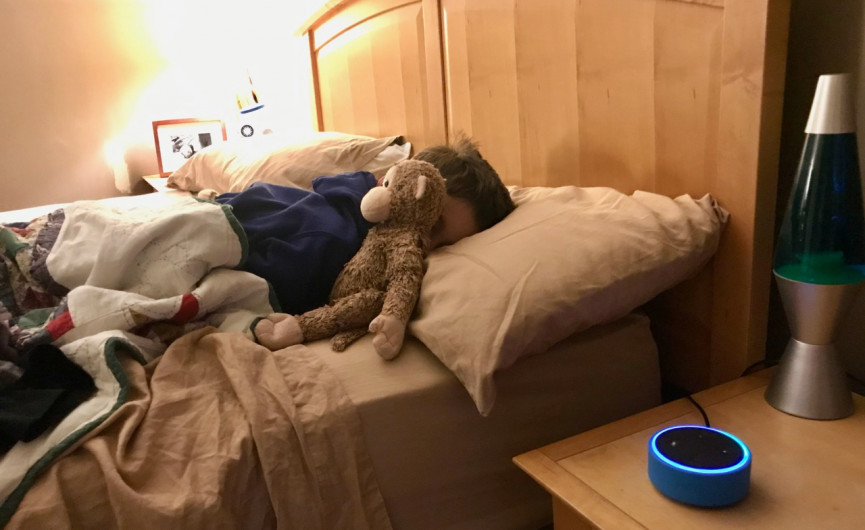
Echo Dot Kids Edition: In use
My two children have had Echo Dots in their rooms for a while now, and are quite used to the devices. In fact, it took a lot of encouragement to get them to even play with this new one. But Amazon has a lot of suggestions to get you going, including a kid-friendly cartoon strip that comes with the device, plus printable cheat sheets you can download.
My favourite suggestion is, “Alexa, I’m bored” – something I hear a lot from my kids. Alexa comes back with suggestions for books to read or games to play, and it will keep offering new suggestions even after the tenth “No” (something I most certainly will not). The benefits of artificial intelligence – endless patience.
My 10-going-on-16-year-old was fully prepared to be unimpressed by whatever Alexa came up with. But FreeTime Alexa is a slightly different AI from adult Alexa – it uses simpler language and is more proactive, prompting the child to respond if it hasn’t heard from them, throwing in the occasional cheer and “woohoo” and other upbeat language that you won’t get from Alexa on a regular Echo.
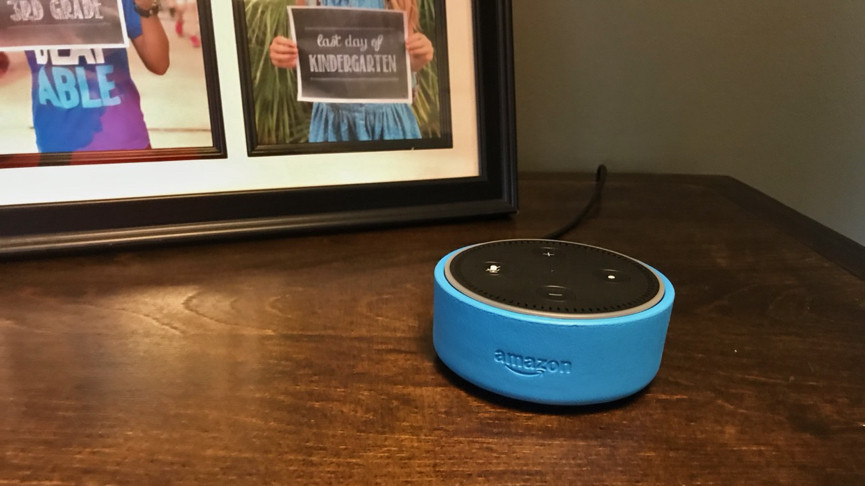
Within a few minutes he and his more interested eight-year-old sister were engrossed in a game of Would You Rather, where you choose between two silly situations and compare your answers with the rest of the world. A few more prompts and a game of Freeze Time had them boogying and laughing for a good 20 minutes. That’s worth the price of admission right there. My children have had Echo Dots in their rooms for over a year, and this was the first time they really had fun with them.
The subscription also gets you access to some audible books, ad-free music and premium apps from the likes of Disney. Our biggest gripe with FreeTime Unlimited on the Dot was accessing that content. There’s no easy way to choose a book, as there’s no screen, and unless you log on to a computer or tablet to scroll through your options, you pretty much get what you’re given.
For younger kids this works fine – a three-year-old is probably going to be happy with any age-appropriate story. But for older kids it can be frustrating. For example, when my son asked Alexa to tell him a story, it opened Disney Story Time and offered to read him the story of Rapunzel. He said no (with an eye-roll), so it offered the story of a dashing Arabian prince – did I mention he’s a 10-year-old boy? We then asked for a book from Audible and it launched into something about dragons (he hates fantasy).
Paying extra for FreeTime Unlimited to access this type of content is really only worth it if you use it in conjunction with a tablet, so your child can also get free apps, videos and books and have more control over what might pop up on the Dot (I’m guessing it will start learning what the child likes and offer up more relevant content). An Echo speaker and a Fire Tablet with FreeTime Unlimited across both devices could very well keep your younger child occupied for hours, crucially without all of it being on a screen.
Whether you choose to opt in to FreeTime Unlimited or not, if you’re giving your child an Alexa device, enable FreeTime. Amazon’s done a very good job with these Parental Controls. They’re a lot more robust and much easier to navigate than iOS’s Screentime and far less confusing than anything Google has to offer. In fact, the only reason my household isn’t all-in on Amazon devices is a lack of YouTube. My one other request/complaint is you need to be able to lock the volume on the Dot. We use our Echo Dots to help everyone get up in the morning.
I have an Alexa Routine that chatters away at my kids until they get out of bed. One day the one for my daughter wasn’t working. I come upstairs to find the volume all the way down and my daughter sound asleep. “She was annoying me!” she told me when I woke her. “So, I turned it down and went back to sleep.”


